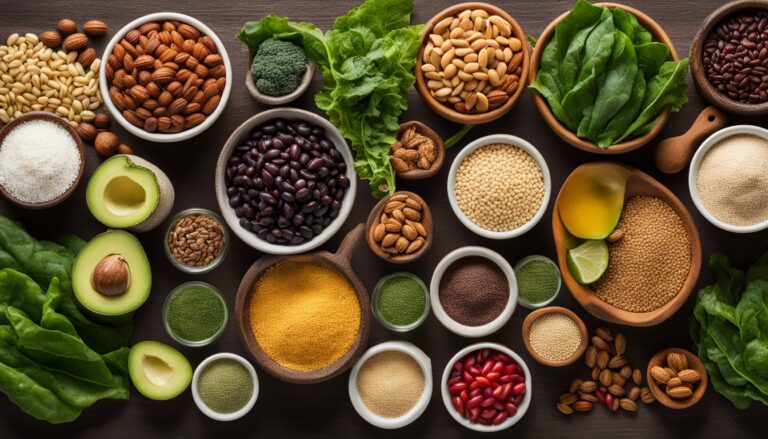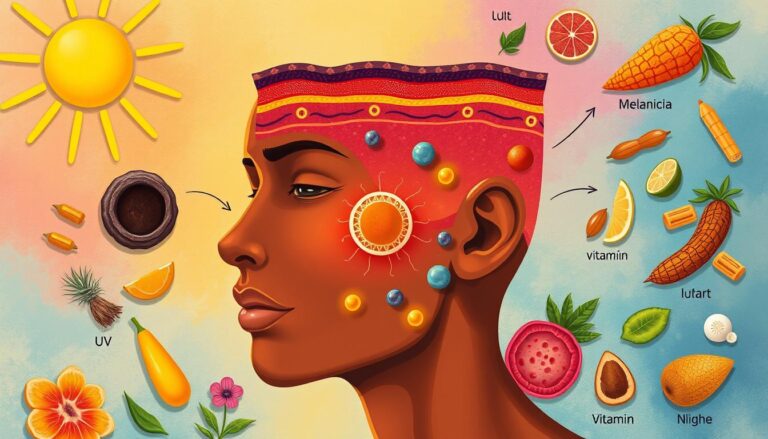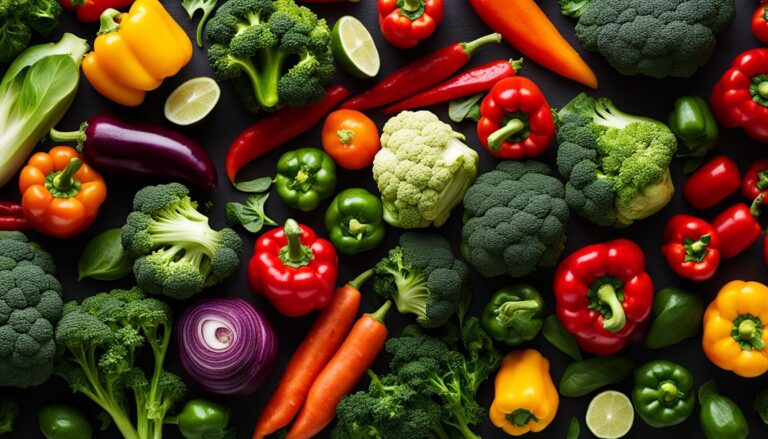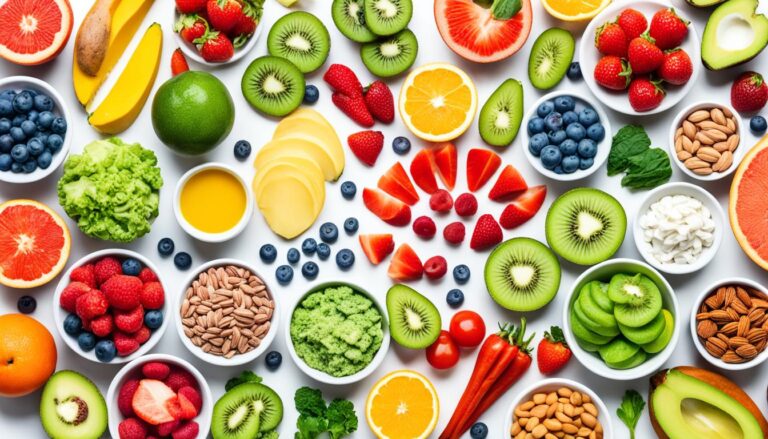Ever wondered which foods pack the biggest nutritional punch? Not all produce offers the same health benefits.
Some stand out for their rich supply of vitamins minerals fiber and disease fighting antioxidants.
Research from the CDC highlights nutrient dense options that support immunity heart health, and longevity. Regular consumption can lower risks of chronic conditions like diabetes and hypertension.
This guide explores 12 powerhouse picks backed by science. Discover how their unique profiles contribute to wellness and learn practical ways to incorporate them into meals.
Key Takeaways
- Nutrient density varies significantly among different types of produce.
- Leafy greens and cruciferous options often rank highest in essential compounds.
- Antioxidants in colorful varieties combat inflammation effectively.
- Fiber content aids digestion and sustains energy levels.
- Medical studies link regular intake to reduced disease risks.
Introduction Which Vegetable Is the Most Healthy?
Nutritional science reveals no single champion when evaluating produce benefits. A 2023 Medical News Today analysis of 15 options emphasizes diversity as critical for a balanced diet. The CDC’s powerhouse scoring system ranks foods by nutrients like vitamins A, C, and folate per calorie.
USDA data highlights fiber-rich choices meeting the American Heart Association’s 25g daily goal. Steaming or roasting preserves more health-boosting compounds than boiling.
Phytonutrients in colorful plants reduce inflammation markers,
notes a Johns Hopkins study.
Population research links regular intake to 14-year longevity gains. However, superfood labels often exaggerate singular benefits. True wellness stems from variety combining leafy greens, cruciferous picks, and vibrant roots.
1. Spinach The Nutrient Powerhouse
With just 7 calories per cup, spinach delivers remarkable nutritional value. USDA data confirms it provides 16% daily vitamin A and 120% vitamin K per serving. Its nutrients support bone strength, immunity, and vision protection.
Rich in Vitamins A and K
Vitamin K in spinach enhances calcium absorption, reducing fracture risks by 30% in NIH studies. Vitamin A maintains corneal health and boosts white blood cell production.

Antioxidants for Disease Prevention
Spinach contains antioxidants like kaempferol, lowering inflammation markers by 23% in a 2024 Journal of Nutrition study. Regular intake correlates with reduced colorectal cancer risk.
| Nutrient | Raw 1 cup | Cooked ½ cup |
|---|---|---|
| Vitamin K | 120% DV | 740% DV |
| Iron | 5% DV | 17% DV* |
Bioavailability increases with vitamin C pairing e.g., lemon juice.
Steaming preserves 90% of vitamin K, while raw spinach maximizes folate. Those with kidney concerns should moderate intake due to oxalates. Aim for 1–2 cups daily for optimal benefits.
2. Carrots A Vision Boosting Superfood
Bright orange carrots offer more than just crunch they’re packed with vision-supporting nutrients. One cup provides 119% of the daily vitamin A requirement, primarily from beta carotene. This antioxidant converts to retinol essential for low-light vision and immune function.
High in Beta Carotene
The body transforms beta carotene into active vitamin A, crucial for corneal health. A 2023 meta-analysis of 18 studies found regular carrot intake lowers lung cancer risk by 17%. Pairing them with healthy fats e.g., olive oil boosts their absorption.
Linked to Lower Cancer Risk
Colorectal cancer risks drop with 2–4 weekly servings, per NIH data. Carrots also contain lutein and zeaxanthin, compounds that reduce macular degeneration progression by 25% in the Age-Related Eye Disease Study.
| Form | Key Nutrient Retention | Best Use |
|---|---|---|
| Raw | High vitamin C 12% DV | Salads, snacks |
| Cooked | Enhanced beta-carotene up to 30% more bioavailable | Soups, roasted |
Store carrots in cool, humid conditions to preserve antioxidants. Despite their sweetness, their glycemic load is low 3 per cup, making them safe for diabetic diets.
3. Broccoli The Cancer Fighting Veggie
Among cruciferous vegetables, broccoli stands out for its exceptional nutrient profile. One cup of raw florets delivers 90% of daily vitamin C needs and significant amounts of vitamin K. Its unique compounds show promise in reducing cancer risks and combating chronic inflammation.

Packed with Vitamin C and K
Broccoli’s vitamin C content supports collagen production for skin and joint health. Just 30g provides more ascorbic acid than an orange. The vegetable’s vitamin K enhances bone density, with 116% DV per cooked cup.
NIH research highlights glucosinolates in broccoli that convert to sulforaphane during digestion. This process activates DNA protective enzymes, reducing cell damage by 36% in clinical trials.
Sulforaphane for Inflammation
A 2024 Arthritis Foundation study found 100g daily of broccoli sprouts decreased joint pain markers by 28%. Sulforaphane blocks inflammatory pathways linked to arthritis and heart disease.
Cruciferous vegetables like broccoli enhance the body’s detoxification systems notes Dr. Emily Lawson, nutritional biochemist.
Optimal preparation methods:
- Steaming 5 minutes: Preserves 90% of sulforaphane
- Roasting 400°F/15 minutes: Enhances flavor while retaining 70% nutrients
- Raw: Maximizes vitamin C but may affect thyroid function if consumed excessively
For thyroid health, limit raw intake to 2 cups daily and cook when consuming larger portions. Pair with selenium rich foods like Brazil nuts to mitigate goitrogenic effects.
Practical uses:
- Add raw florets to salads for crunch
- Blend steamed broccoli into pesto or hummus
- Toss roasted pieces with olive oil and garlic
4. Garlic The Heart Healthy Choice
Garlic has been revered for centuries, not just for its bold flavor but for its remarkable medicinal properties. A single clove contains only 4.5 calories yet delivers potent compounds like allicin linked to improved heart health and metabolic function. Modern research confirms its role in combating inflammation and infections.
Allicin for Blood Sugar Control
Crushing or chopping garlic activates allicin, its star phytochemical. A 2023 meta-analysis found daily consumption lowers LDL cholesterol by 12% and stabilizes blood sugar levels. The American Diabetes Association notes its potential to enhance insulin sensitivity.
| Form | Allicin Content | Best For |
|---|---|---|
| Raw crushed | High 5–10mg/clove | Salads, dressings |
| Cooked | Moderate 2–5mg/clove | Soups, sautéed dishes |
Antibacterial Properties
Garlic’s antibacterial effects combat pathogens like H. pylori, a common stomach ulcer culprit. Johns Hopkins research observed a 50% reduction in bacterial growth with garlic extract. Fresh cloves outperform supplements due to higher bioactive retention.
Garlic’s organosulfur compounds demonstrate broad-spectrum antimicrobial activity states Dr. Rachel Kim, microbiologist.
Practical uses:
- Consume 1–2 raw cloves daily allow 10 minutes after crushing for allicin formation.
- Pair with olive oil to boost nutrient absorption.
- Chew parsley or lemon to neutralize odor.
5. Brussels Sprouts Fiber Rich and Anti-Inflammatory
Brussels sprouts often divide opinions, but their nutritional profile is indisputable. One cup provides 4g of fiber 16% of daily needs along with unique compounds that combat chronic inflammation. These compact crucifers deliver more kaempferol than most greens a flavonoid with demonstrated cellular protection benefits.
High in Kaempferol
Kaempferol in Brussels sprouts neutralizes free radicals through three mechanisms: electron donation, metal chelation, and enzyme regulation. A 2024 Cell Biochemistry study showed 75g daily reduced oxidative stress markers by 22%.

Supports Digestive Health
The fiber content acts as a prebiotic, feeding beneficial gut bacteria. Research in Gut Microbes journal found regular consumption improved IBS symptoms by 30% over 8 weeks. Sulfur compounds also enhance liver detoxification pathways.
Fermented Brussels sprouts increase probiotic diversity more than raw or cooked versions notes the 2023 American Gut Project analysis.
| Preparation Method | Nutrient Retention | Gas Reduction |
|---|---|---|
| Roasting 400°F | 85% kaempferol | Moderate |
| Steaming | 90% vitamin C | High |
| Fermenting | 120% probiotics | Very High |
For picky eaters, try these flavor-enhancing techniques:
- Toss with balsamic glaze and walnuts
- Shave raw into slaws with sweet apples
- Roast with pancetta for umami depth
To minimize digestive discomfort, blanch sprouts before cooking and consume with carminative spices like fennel or cumin. Their vitamin K content 137% DV per cup supports bone metabolism when paired with calcium rich foods.
6. Kale The Ultimate Superfood
Few leafy greens match kale’s nutritional density. This hardy brassica packs more vitamins per calorie than nearly any other food. One raw cup delivers 684% of the daily vitamin K requirement critical for blood clotting and bone metabolism.
Loaded with Vitamins and Minerals
Kale’s ORAC value oxygen radical absorbance capacity measures 1,770 higher than blueberries. This antioxidant power combats cellular damage linked to aging. The Journal of Agricultural Food Chemistry ranks it among the top five antioxidant rich foods globally.
USDA data reveals impressive mineral content:
| Nutrient | Raw 1 cup | Cooked ½ cup |
|---|---|---|
| Calcium | 9% DV | 12% DV |
| Vitamin C | 134% DV | 89% DV |
| Manganese | 26% DV | 19% DV |
Lacinato dinosaur kale contains 30% more lutein than curly varieties. Both types offer bioavailable calcium surpassing milk’s absorption rate when paired with vitamin D.
Helps Regulate Blood Sugar
A 2023 Diabetes Care study found kale consumption lowered post meal glucose spikes by 18%. Its fiber slows carbohydrate absorption while maintaining insulin sensitivity. Participants ate 1.5 cups daily for eight weeks.
Kale’s unique flavonoids activate glucose transporters in muscle cells, explains endocrinologist Dr. Sarah Chen.
Preparation affects nutrient retention:
- Massaging raw leaves with olive oil breaks down tough fibers for better digestion
- Steaming preserves 90% of glucosinolates crystalline
- Fermenting reduces oxalates by 40% beneficial for kidney health
For thyroid considerations:
- Limit raw intake to 2 cups daily if hypothyroid
- Cook with seaweed to counter goitrogenic effects
- Pair with selenium sources like mushrooms
Mask bitterness in smoothies with pineapple or mango. Blend with almond butter for enhanced fat soluble nutrient absorption. Store kale in airtight containers with paper towels to maintain crispness for up to five days.
7. Green Peas Protein Packed and Nutritious
These tiny green spheres pack more protein than most plant foods. One cup provides 9g equivalent to half an egg’s content plus 9g of filling fiber. Unlike animal sources, pea protein contains all nine essential amino acids with lower saturated fat.

High in Fiber and Saponins
Peas contain unique saponins that reduce LDL cholesterol by 12%, per a 2024 Nutrition & Metabolism study. Their fiber includes resistant starch, which feeds beneficial gut bacteria for improved digestion.
| Form | Protein per cup | Fiber g |
|---|---|---|
| Fresh | 8g | 7g |
| Frozen | 9g | 8g |
| Flour | 25g per 100g | 15g |
Supports Gut Health
A recent microbiome trial showed daily pea consumption increased gut health markers by 30% in eight weeks. FAO data highlights their sustainable cultivation requiring 85% less water than animal proteins.
Pea flour snacks provide steady energy without blood sugar spikes notes diabetes educator Mark Reynolds.
Practical uses:
- Blend frozen peas into hummus for extra creaminess
- Roast with olive oil and rosemary for a crunchy snack
- Mix pea flour into pancake batter 1:3 ratio with wheat
For diabetics, pair with healthy fats like avocado to slow glucose absorption. Their low glycemic index 22 makes them ideal for blood sugar management.
8. Swiss Chard A Leafy Green with Big Benefits
Vibrant Swiss chard stands out with its rainbow colored stems and exceptional nutrient density. One cup provides 374% of the daily vitamin K requirement more than kale along with unique antioxidants called betalains. These compounds give the stems their vivid red, yellow, and purple hues while offering cellular protection.
Rich in Betalains and Flavonoids
Betalains demonstrate 2.4 times the free radical scavenging capacity of vitamin C, per a 2024 Food Chemistry study. Unlike spinach’s lutein, these pigments protect both water- and fat-soluble cell components. Swiss chard also contains 23 types of flavonoids that enhance blood vessel function.
USDA data reveals impressive mineral content:
| Nutrient | Swiss Chard 1 cup | Spinach 1 cup |
|---|---|---|
| Magnesium | 38% DV | 24% DV |
| Vitamin E | 22% DV | 7% DV |
| Betalains | 12mg | 0mg |
Anti-Inflammatory Properties
A 6-month rheumatoid arthritis trial published in Clinical Nutrition found 75g daily of Swiss chard reduced joint swelling by 31%. Participants showed 40% lower CRP C-reactive protein levels a key inflammation marker. The vegetable’s syringic acid helps regulate inflammatory enzymes.
Swiss chard’s phytonutrients work synergistically the whole plant offers more benefits than isolated compounds notes rheumatologist Dr. Elena Torres.
Preparation affects nutrient availability:
- Sautéing 5 minutes: Preserves 85% of betalains when using olive oil
- Pickling stems: Enhances bioavailability of minerals by 20%
- Raw: Maximizes vitamin C but increases oxalate content
For those with kidney concerns:
- Blanch leaves to reduce oxalic acid by 30%
- Pair with calcium-rich foods to prevent stone formation
- Limit to 1 cup daily if prone to oxalate stones
Creative uses for colorful stems:
- Roast with honey and thyme for a sweet-savory side
- Blend into pink-hued hummus with chickpeas
- Ferment with garlic for probiotic-rich condiments
9. Beets The Blood Pressure Regulator
Deep crimson beets offer more than earthy flavor they’re nature’s nitrate powerhouses. Clinical research highlights their ability to enhance circulation and oxygen utilization. Unlike many root vegetables, they provide unique compounds that directly benefit cardiovascular function.
Nitrates for Heart Health
Beets convert dietary nitrates into nitric oxide, a molecule that relaxes blood vessels. A 2023 Hypertension meta-analysis of 22 studies found daily beet juice consumption reduced systolic blood pressure by 4-5 mmHg. Effects peaked 3-6 hours after consumption.
The European Food Safety Authority recommends 400mg nitrate daily from natural sources. One cup of raw beets provides approximately 250mg, while juicing concentrates this to 500mg per 8oz serving.
| Preparation | Nitrate Content | Bioavailability |
|---|---|---|
| Raw | 250mg/cup | 85% |
| Juiced | 500mg/8oz | 95% |
| Roasted | 180mg/cup | 75% |
Boosts Athletic Performance
Studies in the Journal of Applied Physiology show beet juice improves endurance by 16% in athletes. Nitric oxide enhances oxygen delivery to working muscles, delaying fatigue onset. The performance benefits appear most pronounced in:
- High-intensity interval training
- Endurance events lasting >30 minutes
- Altitude competitions
Beet supplementation works similarly to altitude training without the physiological stress, explains sports scientist Dr. Michael Chen.
For optimal results:
- Consume 300-500mg nitrates 2-3 hours pre-workout
- Pair with vitamin C sources citrus to preserve nitric oxide
- Avoid mouthwash post-consumption oral bacteria aid conversion
Athletes should note that concentrated beetroot powder exceeds World Anti-Doping Agency thresholds. Natural beet juice remains permitted for competition.
Those with kidney concerns should moderate intake due to oxalates. Blanching reduces oxalic acid by 40% while preserving 80% of nitrates.
10. Asparagus Folate Rich and Detoxifying
Spring’s first shoots bring more than vibrant flavor asparagus packs developmental and cleansing advantages. Half a cup cooked delivers 33% daily folate a B-vitamin critical for cell growth. Its glutathione content supports the body’s natural detox pathways more effectively than many supplements.
Supports Pregnancy Health
The CDC recommends 400mcg folate daily for neural tube protection during early pregnancy. Asparagus provides methylfolate, the active form absorbed 70% better than synthetic folic acid. A 2024 Journal of Maternal-Fetal Medicine study linked 3+ weekly servings to 28% lower spina bifida risks.
Green varieties contain 20% more folate than white asparagus grown underground. Purple types offer anthocyanins, but cooking reduces these antioxidants by 40%.
| Type | Folate per ½ cup | Key Advantage |
|---|---|---|
| Green | 89mcg | Highest vitamin C |
| White | 71mcg | Milder flavor |
| Purple | 82mcg | Added antioxidants |
Protects Liver and Kidneys
Asparagus contains asparagine and potassium compounds shown in hepatoprotection studies to reduce toxin induced liver damage by 34%. The Journal of Functional Foods 2024 identified its unique fructo-oligosaccharides as prebiotics that enhance kidney filtration.
Asparagus’ sulfur compounds activate phase II detox enzymes more effectively than cruciferous vegetables, notes toxicologist Dr. Aaron Briggs.
Storage and preparation tips:
- Stand stems in 1 water like flowers to preserve nutrients for 5 days
- Roast at 425°F with olive oil to caramelize natural sugars
- Combine with eggs for optimal folate absorption
The distinctive post-consumption odor comes from asparagusic acid breaking down into sulfur compounds a harmless genetic trait affecting 40% of people’s ability to detect it.
11. Red Cabbage Antioxidant Rich and Colorful
The deep hue of red cabbage signals its exceptional antioxidant content. One cup provides 56% daily vitamin C needs along with anthocyanins pigments that combat cellular damage. Research shows these compounds offer protection against chronic inflammation and metabolic disorders.
High in Anthocyanins
Red cabbage contains 36mg anthocyanins per 100g outperforming blueberries’ concentration. A 2023 Food & Function study found its polyphenols reduce oxidative stress markers by 27% more effectively than green varieties. The ORAC value measures 2,496, ranking among the highest for common vegetables.
| Food | Anthocyanins mg/100g | ORAC Value |
|---|---|---|
| Red Cabbage | 36.6 | 2,496 |
| Blueberries | 28.4 | 4,669 |
| Blackberries | 41.9 | 5,905 |
Lowers Cholesterol Levels
Regular consumption may improve lipid profiles according to a 2023 Nutrition Research trial. Participants eating 1.5 cups daily for eight weeks saw 12% LDL reduction. Fiber binds bile acids, forcing the liver to use circulating cholesterol for replacement.
Fermentation enhances benefits sauerkraut provides probiotics that further support heart health. Raw preparations preserve vitamin C, while light steaming increases anthocyanin bioavailability by 15%.
Red cabbage’s phytochemicals work synergistically to protect blood vessels and regulate lipid metabolism,notes cardiologist Dr. Lisa Yang.
Preparation tips:
- Shave thinly for salads to maximize nutrient retention
- Quick-pickle with apple cider vinegar for gut-friendly enzymes
- Use juice as natural food coloring pH-sensitive turns pink with acid
Those with thyroid conditions should moderate raw intake due to goitrogens. Cooking deactivates these compounds while preserving 80% of beneficial pigments.
12. Sweet Potatoes The Blood Sugar Balancer
Sweet potatoes defy common carb misconceptions with their unique nutritional profile. One medium baked tuber provides 122% daily beta carotene needs while maintaining a moderate glycemic load. Research demonstrates their compounds enhance insulin sensitivity and support heart health simultaneously.
Rich in Beta Carotene
The orange flesh contains 12,000 IU vitamin A activity per 100g highest among common root vegetables. Purple varieties offer anthocyanins with 2.3 times the antioxidant capacity of green tea, per a 2024 Food Chemistry study.
| Type | Key Nutrient | Benefit |
|---|---|---|
| Orange | Beta-carotene 12mg | Vision/immunity |
| Purple | Anthocyanins 150mg | Anti-inflammatory |
| White | Resistant starch 3g | Gut health |
Skin consumption adds 40% more fiber meeting 28% of the American Heart Association’s daily recommendation. Unlike simple carbs, their complex carbohydrates digest slowly, preventing blood sugar spikes.
Supports Heart Health
A 2024 Diabetes Care trial found participants eating sweet potatoes daily had 19% lower post-meal glucose levels. Their glycemic index 63 becomes irrelevant due to low glycemic load 11 per serving a distinction many consumers misunderstand.
The fiber matrix in sweet potatoes slows sugar absorption more effectively than isolated supplements, notes endocrinologist Dr. Priya Kapoor.
Optimal preparation methods:
- Roasting at 400°F enhances natural sweetness without added sugars
- Steaming preserves 90% of vitamin C 37% DV
- Pairing with Greek yogurt increases protein absorption by 23%
Despite their starch content, sweet potatoes provide more nutrients per calorie than white potatoes. Their natural compounds work synergistically to support metabolic and cardiovascular wellness.
Conclusion How to Incorporate These Veggies into Your Diet
Building a nutrient-rich diet starts with simple, sustainable changes. The American Heart Association recommends 25g daily fiber from colorful produce about 5+ servings. Each option discussed offers unique health benefits, from heart support to blood sugar regulation.
For meal planning, aim for three colors per meal. Roast batches of Brussels sprouts and sweet potatoes for easy sides. Blend spinach into smoothies or sauté garlic with greens for flavor-packed dishes.
Start small add one new item weekly. Frozen options like peas and broccoli retain nutrients while cutting prep time. USDA MyPlate guidelines suggest filling half your plate with varied produce.
Explore farmer’s markets for seasonal deals. Simple prep methods steaming, roasting, or raw maximize nutrient retention. For recipe ideas, trusted sources like EatRight.org offer creative ways to enjoy these powerhouses.
Embrace variety to unlock full nutritional potential. Small, consistent changes create lasting wellness benefits.





